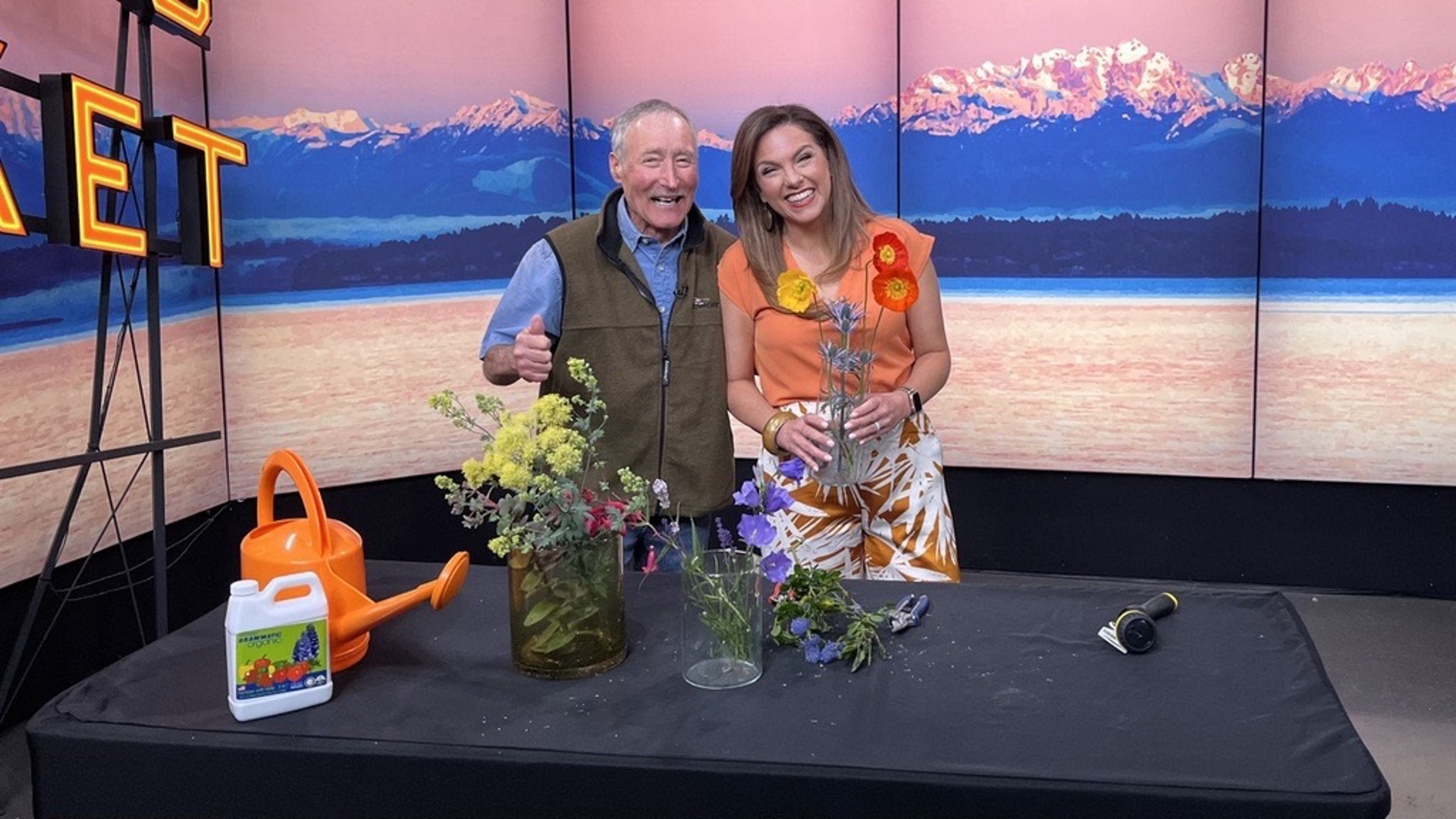SEATTLE — Bees and other pollinating insects are threatened by habitat degradation and pesticides. The number of pollinators has gone down and some species are endangered. Three-fourths of the world's flowering plants and about 35% of the world's food crops depend on animal pollinators to reproduce. That's one out of every three bites of food you eat. More than 3,500 species of native bees help increase crop yields. Interestingly studies have shown that ornamental gardens featuring a wide variety of ornamental plants tend to attract a wider variety of pollinating insects than do most gardens planted strictly with native plants.
We all need to do our part to help our bees, but the good news is that it's easy and fun to create a mixed border filled with colorful shrubs, perennials and annuals that are just as attractive to our bees as they are to us and visitors to our gardens. One key thing to remember is to avoid using chemical pesticides. Fortunately, if you have an ornamental garden with lots of different kinds of plants, you'll attract so many beneficial insects that eat harmful ones, pest control is rarely needed.
If you don't already have a mixed border, Start small. Find a sunny, highly visible spot in your garden to create your new garden. Often a bed by the front entrance to a house works well. Begin by planting a few evergreen and deciduous shrubs. Try to select shrubs that won't grow too big and take over the whole space.
Next fill in the open spaces with perennials. Put the taller growing ones in the back and middle, and lower growing plants along the sides and the front. Try to put plants with contrasting textures and forms next to each other to add interest. Have fun making cool color combinations, making sure to select plants with colored foliage to add to add extra color when the ephemeral flowers fade. When you start getting compliments and find out how fun mixed border gardening is, before you know it you'll turn your whole yard in to a mixed border!
Examples of some great pollinating plants. (Note: This is just the tip of the ice-berg, there are gazillions more).
Ceanothus victoria (California Lilac): Shrub that can grow to over 10 feet tall and wide. Blue flowers are buzzing with bees all day long.
Papaver nudicaule (Iceland poppies): The bees literally role around in the pollen rich stamens on this colorful short lived perennial.
Lavendula (Lavender): Blue is the bees favorite color. Hummingbirds love them as well.
Astrantia (Masterwort): Highly attractive perennial that does best in partial shade.
Penstemon (Beardstongue): Drought tolerant, beautiful trumpet flowers.
Attracts bees nd hummingbirds.
Tradescantia (Spiderwort): Blue flowers - seeds around politely, highly attractive to bumble bees and butterflies.
Sedum Autumn Joy (Stonecrop): Autumn Joy' Sedum produces delicate bright-pink flowers on large heads that age into a beautiful copper color as fall approaches, that are cove red with bees in autumn.
Salvia nemorosa (woodland sage): A clump-forming, deciduous perennial in the Lamiaceae (mint) family. It can grow as high as 3 feet and 2 feet wide featuring spiky blue flowers that bees love the living tweetle out of.
Segment Producer Suzie Wiley. Watch New Day Northwest at 11 a.m. weekdays on KING 5 and streaming live on KING5.com. Contact New Day.

